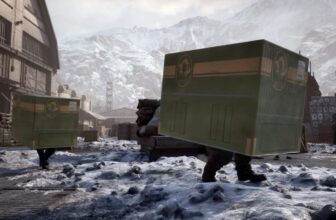
Check out our latest products
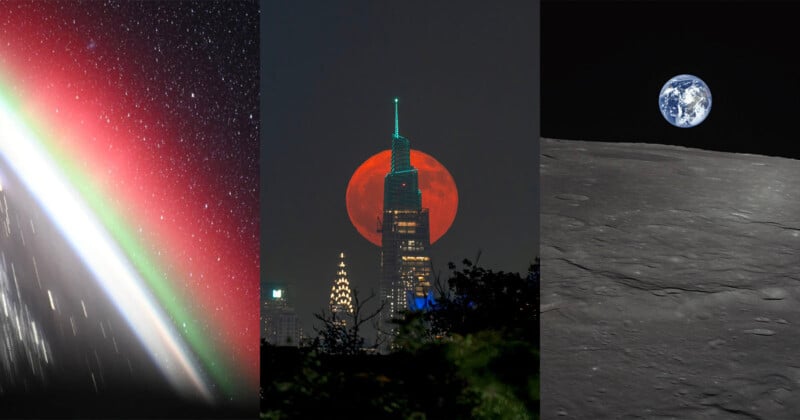
Each week, there are thousands of incredible photographs taken in space by NASA, ESA, telescopes, satellites, rovers, and beyond. Sometimes it feels like there is too much space content so PetaPixel has devised a handy article where you can see all of the best images of the cosmos this month.
Enormous Volcano on Mars Peeks Through the Clouds
On June 6, NASA’s 2001 Mars Odyssey witnessed Arsia Mons, a Martian volcano, breaking through the clouds. Arsia Mons is over 12 miles tall which dwarfs any found on Earth; it is twice as high as Mauna Loa, Earth’s largest volcano.

The photo shows Arsia Mons poking through a canopy of clouds just before dawn. This angle allows scientists to see dust and water ice cloud layers. The 2001 Odyssey orbiter is the longest-running mission orbiting another planet, says NASA.
Strawberry Moon Lights Up New York
A rare Strawberry Moon was in the skies this week, clinging low to the horizon due to the summer season. Mike Carroll was in New York City to capture stunning photos of the full Moon as it rose behind the Chrysler Building and One Vanderbilt.

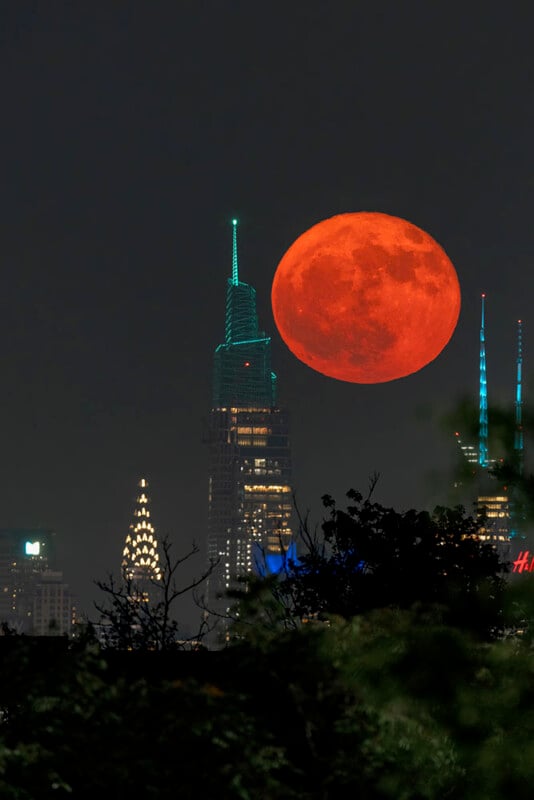
This time of year is the traditional time the strawberry picking season starts in the northern hemisphere, hence the name. This Strawberry Moon was in its lowest position in the sky for 19 years and won’t be as low again for another 19 years.
Don Pettit Catches a Glimpse of Andromeda
Although not taken that recently, astronaut Don Pettit shared a photo he got of Andromeda Galaxy, the Milky Way’s neighbor, on Reddit earlier this month.
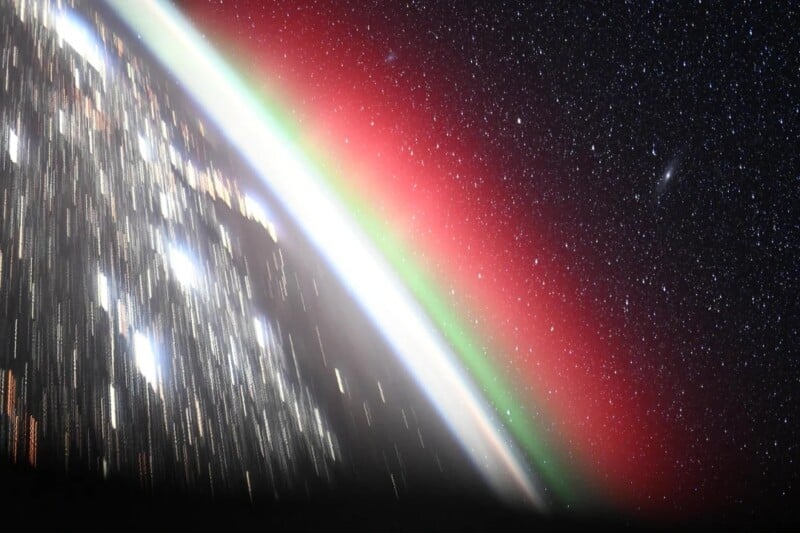
Pettit explains that the 10-second exposure also caught Earth with city lights streaking by as well as red and green aurora illuminated by the rising Sun. Pettit used his handmade sidereal drive track to pinpoint the stars, “despite our orbital speeds.”
A Planet is Born
On June 9, the European Southern Observatory’s Very Large Telescope in Chile captured what scientists believe is an image of a large planet forming around a young star.

The swirl of dust is believed to be a gas giant being built. The inside dark ring denotes the planet’s gravitational pull as it hoovers up dust, according to Live Science. It is very rare to image a planet like this while in its infancy.
Moon Lander Snaps Big Blue Marble
Landing spacecraft on the Moon is difficult and although Japanese company ispace’s recent attempt with Resilience presumably crashed after the team lost comms, it did capture a beautiful photo of Earth not long before its landing attempt on June 5.

“If it weren’t for the clouds, the lander could have likely seen Japan here, where it spent much of its time on Earth being carefully designed, assembled, and tested by ispace crew,” ispace wrote on X.
James Webb’s Giant Panorama of the Early Universe
On June 5, the James Webb Space Telescope (JWST) unveiled what researchers call the “largest map of the early Universe to date.”
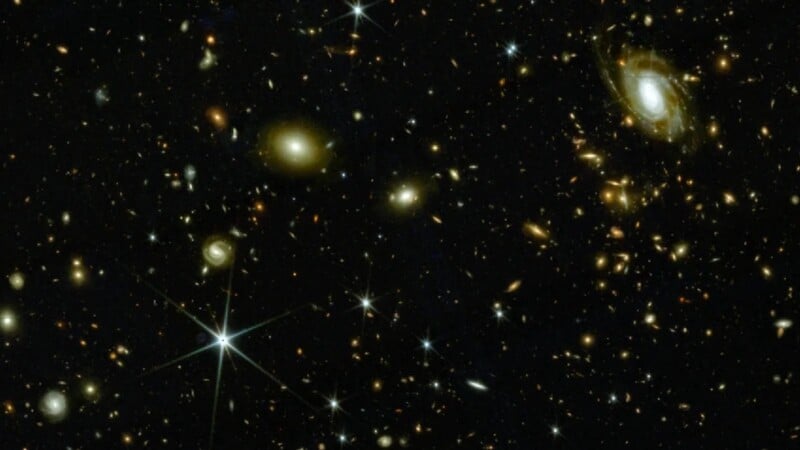
The image offers a look at the ancient cosmos by stitching together more than 10,000 exposures that feature almost 800,000 galaxies, some of which belong to the Universe’s earliest eras. The COSMOS-web team released this interactive map to explore the giant image.
Astronaut’s First-Ever Timelapse
NASA astronaut Jonny Kim shot his first-ever timelapse recently while stationed onboard the International Space Station. The ex-U.S. Marine compared it to fishing and says he got a few pointers from fellow astronaut Nicole Ayers.
My first time-lapse. Thanks to some instruction and tips from @Astro_Ayers, I caught my first aurora. After seeing the result, I told her this felt like fishing. Prepping the camera, the angle, the settings, the mount, then setting your timer and coming back to hope you got a… pic.twitter.com/RgEaq50E5p
— Jonny Kim (@JonnyKimUSA) June 6, 2025
Kim captured the aurora lights dancing over southeast Asia and Australia.

![[2025 Upgraded] Retractable Car Charger, SUPERONE 69W Car Phone Charger with Cables Fast Charging, Gifts for Men Women Car Accessories for iPhone 16 15 14 13 12, Samsung, Black](https://i1.wp.com/m.media-amazon.com/images/I/61SaegZpsSL._AC_SL1500_.jpg?w=300&resize=300,300&ssl=1)



![[True Military-Grade] Car Phone Holder【2024 Stronger Suction & Clip】 Universal Cell Phone Holder for Car Mount for Dashboard Windshield Air Vent Long Arm Cell Phone Car Mount Thick Case,Black](https://i2.wp.com/m.media-amazon.com/images/I/715PBCuJezL._AC_SL1500_.jpg?w=300&resize=300,300&ssl=1)
![[エレコム] スマホショルダー ショルダーストラップ 肩掛け ストラップホールシート付属 丸紐 8mm P-STSDH2R08](https://i3.wp.com/m.media-amazon.com/images/I/51BMFf06pxL._AC_SL1500_.jpg?w=300&resize=300,300&ssl=1)




